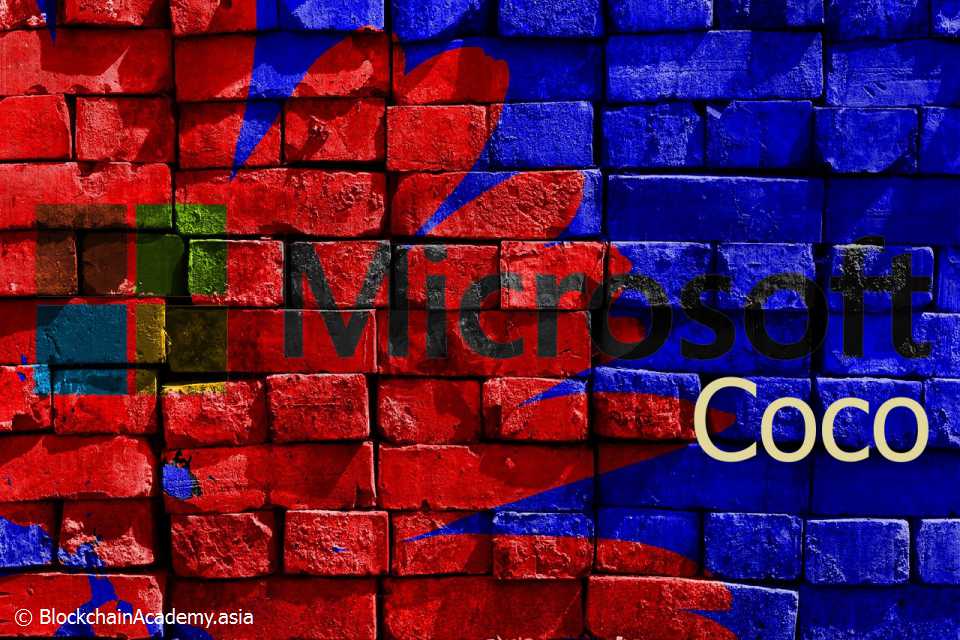Recently (about 1-week ago), Microsoft announced the release of their enterprise Blockchain called Coco. What is the Coco framework exactly? How does it work? Will it be adopted by the enterprise communities? I did some poking around and decided to jot down my findings in this post.
According to Mark Russinovich CTO, Microsoft Azure, a growing number of enterprises are investing in blockchain as a secure and transparent way to digitally track the ownership of assets across trust boundaries and to collaborate on shared business processes, opening up new opportunities for cross-organizational collaboration and imaginative new business models.
Microsoft is committed to bringing blockchain to the enterprise—and is working with customers, partners, and the blockchain community to continue advancing its enterprise readiness. Our mission is to help companies thrive in this new era of secure multi-party computation by delivering open, scalable platforms and services that any company—from ledger startups to retailers to health providers to global banks—can use to improved shared business processes.
Coco Framework Is Open Source Without A Doubt
Coco is an open-source system designed to provide high-scale and confidential blockchain networks for enterprise purposes. The main objective of the initiative is to boost global adoption of blockchain technology among companies and corporations. Rather than seeing private blockchains created which can only be used by select parties, CoCo wants to slowly steer enterprises in one direction to ensure a unified approach to distributed ledgers.
Coco is its own proprietary blockchain ecosystem. It can connect existing blockchains with one another, which is a good sign. It is designed specifically for consortiums where nodes and actors can be controlled. It is not a decentralized solution in this regard, as participants will still be able to exert a high degree of control over their blockchain. In that respect, CoCo is more of a distributed ledger-oriented approach rather than a decentralized technology.
According to Cristine, the CoCo framework source code will be available on GitHub in early 2018.

Coco's Technical Aspect
Ok now let's take a look at Coco technically.
Coco is designed specifically for confidential consortiums, where nodes and actors are explicitly declared and controlled. Based on these requirements, Coco presents an alternative approach to ledger construction, giving enterprises the scalability, distributed governance and enhanced confidentiality they need without sacrificing the inherent security and immutability they expect.
Leveraging the power of existing blockchain protocols, trusted execution environments (TEEs) such as Intel SGX and Windows Virtual Secure Mode (VSM), distributed systems and cryptography, Coco enables enterprise-ready blockchain networks that deliver:
-Throughput and latency approaching database speeds.
-Richer, more flexible, business-specific confidentiality models.
-Network policy management through distributed governance.
-Support for non-deterministic transactions.
By providing these capabilities, Coco offers a trusted foundation with which existing blockchain protocols can be integrated to deliver complete, enterprise-ready ledger solutions, opening up broad, high scale scenarios across industries, and furthering blockchain's ability to digital transform business.
Who Is Testing Coco?
Microsoft has already begun exploring Coco’s potential across a variety of industries, including retail, supply chain and financial services.
"Being able to run our existing supply chain Dapp code much faster within Coco framework is a great performance improvement that will reduce friction when we talk about enterprise Blockchain readiness with our retail customers. Adding data confidentiality support without sacrificing this improvement is what will enable us to lead the digital transformation we are envisioning with Smart Supply Chains."
- Tom Racette, Vice President, Global Retail Business Development, Mojix
Whether a customer is designing an end-to-end trade finance solution, using blockchain to ensure security at the edge or leveraging Enterprise Smart Contracts to drive back office efficiencies, Coco enables them to meet their enterprise requirements. Microsoft is the only cloud provider that delivers consistency across on-premises and the public cloud at hyperscale while providing access to the rich Azure ecosystem for the wide range of applications that will be built on top of blockchain as a shared data layer.
Coco Is Compatible With Any Blockchain Protocol
By design, Coco is open and compatible with any blockchain protocol. Microsoft has already begun integrating Ethereum into Coco and we’re thrilled to announce that J.P. Morgan Chase, Intel and R3 have committed to integrating enterprise ledgers, Quorum, Hyperledger Sawtooth and Corda, respectively. This is just the beginning, and we look forward to exploring integration opportunities with other ledgers in the near future.
"Microsoft's Coco Framework represents a breakthrough in achieving highly scalable, confidential, permissioned Ethereum or other blockchain networks that will be an important construct in the emerging world of variously interconnected blockchain systems. "
- Joseph Lubin, Founder of ConsenSys
In Conclusion
Personally, I think Coco has great potential but it will only be accepted and put into scaleable use IF the open source communities get involved because the communities are the ones driving the entire blockchain innovation today. I think if more and more test-beds are done using Coco that would be best as it will be a truly positive way to scale development as they receive input from customers and partners. The best part is, Coco will be compatible, by design, with any ledger protocol and will be able to operate in the cloud and on premises, on any operating system and hypervisor that supports a compatible TEE.
To get an in-depth view of the Coco framework, download the technical whitepaper.
Better still, check out Mark's video below where is demonstrates the Coco framework.
- Ooki DAO Seeks Legal Defence against CFTC Drawing on Community Support - September 30, 2022
- Senator Cynthia Lummis Defends Bitcoin Again, Says it “Cannot be Stopped” - September 30, 2022
- Binance Secures Registration in New Zealand, to Open Local Office - September 30, 2022


